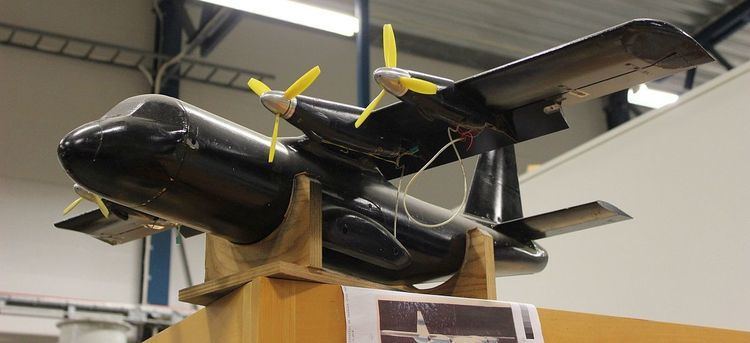 | ||
The Saab 107 was a proposed series of small airliners that were intended to be manufactured by Saab Group of Sweden, but were never built.
Contents
Development
Two variants of a feederliner project were under development at Svenska Aeroplan AB from 1966 to 1968 with a projected first date of operation in 1973, the SAAB 1071 and the SAAB 1073. The design goals for both designs were minimization of turnaround time at an airport as well as production and operation costs. Following an intensive market research SAAB wanted to compete with terrestrial transport in both aspects. A model of the 1071 was presented at the Hannover air show in April 1968 and model photos as well as illustrations of both projects appeared in the specialized press at about the same time. However, a go-ahead was never given.
Design
The SAAB 1071 was projected for very short distances between small domestic airfields and international hub airports. The design featured a high wing with rectangular plan form, a circular pressurized fuselage for 40 passengers and four turboprop engines in the 800 h.p. class. Development costs were estimated at 100 million SKR and the final unit sales costs at maximal 5 million SKR. Wings and fuselage were designed to be easily stretchable at low development costs if needed later on. The wing was equipped with simple, single-pivoted slot flaps to obtain high lift for short take offs within 800 m run way. Propeller thrust reversal was intended to be used for reduction of the landing distance.
The second project SAAB 1073 was intended for passenger and freight transport on somewhat longer domestic lines between airports that offer runways of 1200 m length or more. For this, the STOL requirement was less severe and for a better cruising economy the design featured two turbofans in nacelles under the high wing which had a moderate wing sweep. The T-tail kept the elevator out of the exhaust jets. The intended turbofans were in the 10,000 lb-thrust class (Rolls-Royce Trent) and the passenger capacity amounted to 80. Development costs were estimated at 300 million SKR and the final sales price at maximal 15 million SKR. Realization of this project would have needed public support as well as cooperation with a large foreign aircraft manufacturer.
Specifications (Model 1071)
Data from Interavia 2/1968 pp. 199-200
General characteristics
Performance
Specifications (Model 1073)
Data from Interavia 2/1968 pp. 199-200
General characteristics
Performance
